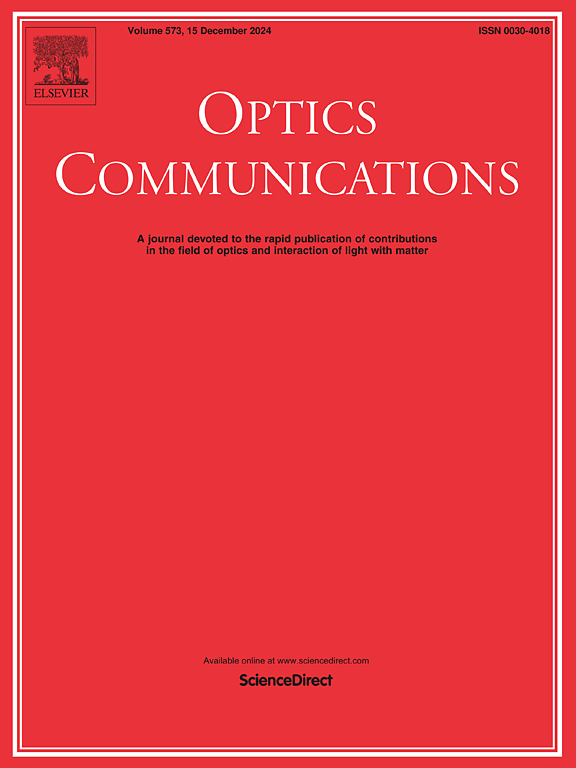利用局部斑点模式进行多波长光谱重建
IF 2.2
3区 物理与天体物理
Q2 OPTICS
引用次数: 0
摘要
基于斑点的重构光谱仪(RS)以智能和单次拍摄的方式检索光谱,与传统的扫描装置光谱仪相比,测量速率显著提高。由于探测器帧速率有限,有关红外区域高速多波长探测的报道很少,这与可见光光谱不同,可见光光谱通常使用硅基相机作为波长测量仪。目前的 RS 通常依赖于全像素斑点,但本研究表明,局部斑点也能传递全局光谱信息。实验结果表明,与多模光纤(MMF)的全像素斑点相比,积分球的局部斑点可将光谱测量速度提高 35 倍,而精度损失却很小。研究调查了局部斑点的位置和大小对 RS 的影响。研究还提出了平衡像素数量、测量速度和重建精度的优化标准。这项研究有助于快速校准传输矩阵和详细观测敏捷光谱演变。本文章由计算机程序翻译,如有差异,请以英文原文为准。
Multi-wavelength spectral reconstruction with localized speckle pattern
The speckle-based reconstructive spectrometers (RSs) retrieve spectra in a smart and single-shot way, significantly increasing the measurement rate compared to traditional spectrometers with scanning devices. Reports on high-speed multi-wavelength detection in the infrared region are scarce due to limited detector frame rates, unlike in the visible light spectrum, where silicon-based cameras are commonly used for wavemeters. Current RSs commonly rely on full-pixel speckles, but this study demonstrates that localized speckles also convey global spectral information. Experimental results show that an integrating sphere's local speckles can improve spectral measurement speed by 35 times with minimal loss in accuracy compared to full-pixel speckles of a multimode fiber (MMF). The study investigates the influence of the position and size of local speckles on RSs. The optimization criterion for balancing pixel number, measurement speed and reconstruction accuracy is also presented. This research contributes to speedy transmission matrix calibration and detailed observation of agile spectral evolution.
求助全文
通过发布文献求助,成功后即可免费获取论文全文。
去求助
来源期刊

Optics Communications
物理-光学
CiteScore
5.10
自引率
8.30%
发文量
681
审稿时长
38 days
期刊介绍:
Optics Communications invites original and timely contributions containing new results in various fields of optics and photonics. The journal considers theoretical and experimental research in areas ranging from the fundamental properties of light to technological applications. Topics covered include classical and quantum optics, optical physics and light-matter interactions, lasers, imaging, guided-wave optics and optical information processing. Manuscripts should offer clear evidence of novelty and significance. Papers concentrating on mathematical and computational issues, with limited connection to optics, are not suitable for publication in the Journal. Similarly, small technical advances, or papers concerned only with engineering applications or issues of materials science fall outside the journal scope.
 求助内容:
求助内容: 应助结果提醒方式:
应助结果提醒方式:


